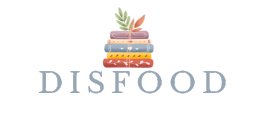Programming is the backbone of the modern digital world. It powers everything from websites and mobile apps to artificial intelligence and machine learning systems. But to dive into the world of programming, it’s essential to understand the fundamental components: programming languages, frameworks, and tools. These are the building blocks that developers use to create, build, and maintain software applications.
In this article, we’ll explore the wide range of programming languages, frameworks, and tools that shape the landscape of software development. Whether you’re a beginner trying to choose the right language or an experienced developer looking to expand your skill set, this guide will provide you with valuable insights into the dynamic world of programming.
1. Understanding Programming Languages
Programming languages are the core method through which humans communicate instructions to computers. Different programming languages are designed for various types of tasks, and each has its strengths and weaknesses. There are hundreds of programming languages available, but a few stand out due to their widespread use and applications.
a. High-Level vs. Low-Level Languages
Programming languages are often categorized into high-level and low-level languages:
- High-Level Languages: These languages are closer to human languages and abstract away the complexities of the computer’s hardware. They’re easier to read, write, and understand. Examples include Python, JavaScript, Java, and C#.
- Low-Level Languages: These languages provide more control over hardware and memory management but are harder to use and understand. Examples include Assembly and C (sometimes considered a low-level language despite being closer to high-level than Assembly).
b. Popular Programming Languages
- Python: One of the most beginner-friendly languages, Python is known for its simplicity and readability. It’s used in a wide range of fields, including web development, data science, machine learning, automation, and scripting. Python’s rich ecosystem of libraries (such as NumPy and TensorFlow) makes it a go-to language for both beginners and experts.
- JavaScript: This is the language of the web. JavaScript enables interactive features on websites and is essential for front-end web development. With the rise of frameworks like Node.js, JavaScript is also used for back-end development, making it a full-stack development language.
- Java: Java is an object-oriented language that has been around for decades. It’s widely used in large enterprise applications, Android app development, and web applications. Java’s “Write Once, Run Anywhere” philosophy makes it a popular choice for cross-platform applications.
- C/C++: C is one of the oldest and most influential programming languages, while C++ extends C with object-oriented capabilities. Both are often used in systems programming, game development, and performance-critical applications.
- Ruby: Known for its simplicity and elegance, Ruby is a dynamic, object-oriented language that’s particularly popular in web development. The Ruby on Rails framework is commonly used for building scalable, high-performance web applications.
- Swift: Apple’s primary language for iOS and macOS development, Swift is known for its speed and safety features. It’s modern, expressive, and easy to learn, making it the go-to language for Apple ecosystem apps.
- PHP: A server-side scripting language, PHP is widely used for building dynamic websites and web applications. Despite being considered somewhat outdated by some, PHP powers a significant portion of the web, including platforms like WordPress.
c. Choosing the Right Programming Language
The choice of programming language largely depends on the project at hand:
- Web Development: For front-end development, JavaScript (along with HTML and CSS) is the standard. For back-end development, languages like Python, Ruby, PHP, and JavaScript (via Node.js) are commonly used.
- Mobile App Development: For iOS apps, Swift is the go-to language. For Android apps, Java or Kotlin is used. React Native and Flutter allow for cross-platform development using JavaScript or Dart, respectively.
- Data Science and AI: Python is by far the most popular language for data science, machine learning, and artificial intelligence, thanks to powerful libraries like TensorFlow, Keras, and Pandas.
- Game Development: C++ and C# (with Unity) are popular choices in game development due to their performance and flexibility.
2. Frameworks in Programming
Frameworks are pre-written sets of code that developers can use to build applications more quickly. They provide structure and reusable components, allowing programmers to focus on the unique aspects of their applications instead of reinventing the wheel. Frameworks often come with libraries, tools, and best practices built-in.
a. What is a Framework?
A framework provides a foundation for developers to build applications without having to start from scratch. Frameworks follow a specific set of conventions and architecture, which ensures consistency and efficiency in development.
For example, rather than manually handling tasks like routing, data handling, and user authentication, a framework would provide built-in functions for these tasks.
b. Popular Frameworks by Category
- Web Development Frameworks:
- Django (Python): Django is a high-level Python web framework that simplifies the creation of secure and scalable web applications. It follows the “batteries-included” philosophy, offering a range of features like authentication, database management, and URL routing.
- Ruby on Rails (Ruby): A full-stack framework that makes web application development faster and more efficient. It follows the MVC (Model-View-Controller) pattern and is well-suited for building web applications with a database backend.
- React (JavaScript): While technically a library, React is often considered a framework due to its comprehensive set of tools for building dynamic, single-page applications (SPAs). It’s particularly popular for front-end development.
- Angular (JavaScript/TypeScript): A front-end framework for building dynamic, responsive web applications. Developed by Google, Angular is a powerful framework for developing complex SPAs.
- Node.js (JavaScript): An open-source, cross-platform runtime environment that allows developers to run JavaScript on the server side. Combined with frameworks like Express.js, it’s a robust choice for back-end development.
- Mobile App Development Frameworks:
- Flutter (Dart): Flutter allows developers to build natively compiled applications for mobile, web, and desktop from a single codebase. It’s known for its fast development cycle and customizable UI components.
- React Native (JavaScript): React Native allows developers to build mobile applications using JavaScript and React. It provides native performance and a seamless user experience across both iOS and Android.
- Game Development Frameworks:
- Unity (C#): Unity is a powerful game development engine that uses C# as its primary scripting language. It’s used to create 2D and 3D games across multiple platforms.
- Unreal Engine (C++): Unreal Engine is a highly advanced framework for creating AAA games, known for its impressive graphics and performance. It’s powered by C++ and offers extensive documentation and tutorials for developers.
- Machine Learning Frameworks:
- TensorFlow (Python): Developed by Google, TensorFlow is an open-source framework for building machine learning models. It’s widely used in deep learning and artificial intelligence applications.
- PyTorch (Python): An open-source machine learning library developed by Facebook, PyTorch is popular for its flexibility and ease of use in research and development of AI models.
c. When to Use a Framework
- Speed and Efficiency: Frameworks significantly reduce development time by providing reusable components and tools.
- Best Practices: Frameworks encourage developers to follow industry best practices and coding conventions.
- Scalability: Frameworks are often designed with scalability in mind, making it easier to grow and maintain large applications.
3. Essential Development Tools
Tools play a crucial role in the development process, from writing code to testing and deployment. They help programmers be more productive, improve code quality, and streamline the software development lifecycle.
a. Integrated Development Environments (IDEs)
IDEs are powerful tools that combine various features like code editors, debuggers, and compilers into one interface, making coding more efficient.
- Visual Studio Code: A lightweight, open-source IDE that supports multiple programming languages and integrates well with various frameworks and tools.
- PyCharm: A powerful IDE for Python development that offers intelligent code completion, debugging, and version control features.
- IntelliJ IDEA: Popular among Java developers, this IDE provides features like code navigation, refactoring tools, and integrated testing.
b. Version Control Systems (VCS)
Version control systems allow developers to track changes to code over time, collaborate with other developers, and revert to previous versions if necessary.
- Git: The most widely used version control system, Git helps manage code changes and collaborate effectively. GitHub and GitLab are popular platforms for hosting Git repositories.
c. Testing and Debugging Tools
Testing and debugging tools help developers ensure that their code works as expected and that errors are quickly identified and fixed.
- Jest: A JavaScript testing framework commonly used for unit and integration testing in web development projects.
- Postman: A popular tool for testing APIs by making HTTP requests and inspecting responses.
d. Deployment Tools
Deployment tools help automate the process of pushing code to production environments and managing application releases.
- Docker: A platform that allows developers to package applications and their dependencies into containers, ensuring consistency across development and production environments.
- Kubernetes: A tool for automating the deployment, scaling, and management of containerized applications.
4. Conclusion
The world of programming is vast and constantly evolving. Choosing the right programming language, framework, and tools can be overwhelming, but it’s crucial for building high-quality software. Whether you’re working on a web application, mobile app, or complex machine learning system, understanding the strengths and weaknesses of different languages and frameworks is key to choosing the best solutions for your project.
As technology continues to advance, new languages, frameworks, and tools will emerge, offering even more possibilities for developers. The key to success in programming is continuous learning, adaptability, and a passion for solving problems through code.
Key Takeaways:
- Programming languages vary in terms of use cases, with languages like Python, JavaScript, and Java being popular for general-purpose development.
- Frameworks like Django, Ruby on Rails, React, and TensorFlow help streamline development and provide reusable components.
- Development tools such as IDEs, version control systems, and testing frameworks enhance productivity and code quality.
- The choice of language, framework, and tools depends on the project’s requirements, including speed, scalability, and flexibility.
Exploring the world of programming is an exciting journey that requires curiosity, practice, and a willingness to learn new technologies.

